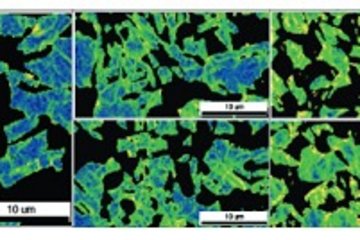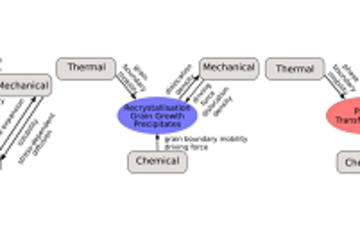All genres
2501.
Report
Plastic deformation of aluminium-bicrystals. (2004)
2502.
Report
Experimental investigation of the deformation behavior of aluminium-bicrystals. MPI für Eisenforschung GmbH, Düsseldorf, Germany (2004)
2503.
Report
Simulation of textures and Lankford values for face centered cubic polycrystaline metals by using a modified Taylor model. (2004)
2504.
Report
A 3D probabilistic cellular automaton for the simulation of recrystallization and grain growth phenomena. Max-Planck-Society, München, Germany (2004)
2505.
Report
Ternary high-strength Cu-based in-situ metal matrix composites. MPI für Eisenforschung GmbH, Düsseldorf, Germany (2004)
2506.
Report
Recommendations for Future Basic Research on Metallic Alloys and Composites in the 6th EU Framework Program - Metals and composites: Basis for growth, safety, and ecology. (2004)
2507.
Report
A texture component crystal plasticity finite element method for scalable anisotropy simulations. MPI für Eisenforschung GmbH, Düsseldorf, Germany (2004)
2508.
Report
Orientation dependence of recrystallization in aluminum – Simulation and experiment. (2004)
2509.
Report
Report on copper–niob research at the Max-Planck-Institut, Düsseldorf – Simulations and experiments. MPI für Eisenforschung, Düsseldorf, Germany (2004)
2510.
Report
A New Finite Element Method for Predicting Anisotropy of Steels. MPI für Eisenforschung GmbH, Düsseldorf, Germany (2004)
2511.
Report
Finite element simulation of plastic deformation of steels. MPI für Eisenforschung GmbH, Düsseldorf, Germany (2004)
2512.
Report
Introduction of a large-strain texture-based finite element method. MPI für Eisenforschung GmbH, Düsseldorf, Germany (2004)
2513.
Report
Ridging and color changes of aluminum sheets during plastic straining. (2004)
2514.
Report
Theoretische und experimentelle Untersuchung der Kornwechselwirkung in Aluminium. MPI für Eisenforschung GmbH, Düsseldorf, Germany (2004)
2515.
Report
Mikrotexturmessung am Max-Planck-Institut für Eisenforschung. (2004)
2516.
Report
Recrystallization simulation by use of cellular automata. (2003)
2517.
Report
Some Critical Thoughts on Computational Materials Science. (2003)
2518.
Report
Recrystallization Simulation by Coupling of a Crystal Plasticity FEM with a Cellular Automaton Method. (2003)
2519.
Issue
Zeitschrift für Metallkunde (Special issue). Zeitschrift für Metallkunde 6 (2004)
2520.
Other
Organization of "Opening symposium for advanced (S)TEM and APT facilities at MPIE". (2018)











